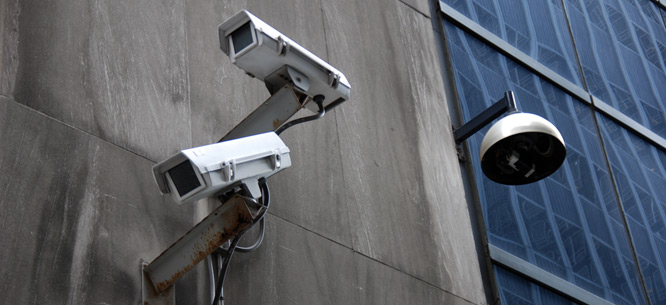When the Surveillance State Meets Donald Trump
When the Surveillance State Meets Donald Trump
Political moods swing back and forth, but the powers of surveillance and repression only grow—and there is good reason to fear what the Trump administration will do with them.

The first targets of the Trump administration were relatively marginalized groups—undocumented immigrants and would-be refugees to this country. In this next phase, we are witnessing expressions of the White House’s determination to act against mainstream political personalities and institutions—the news media; an independent FBI; and state voter registration authorities. With more than three years remaining in Trump’s mandate, we need to wonder aloud how far attacks on domestic dissent are likely to go—and what form they may take.
And let’s keep in mind that the palette of tools available for government repression grows ever broader over time. Technological progress fuels a steady stream of new ways for the authorities to shine bright light on the lives of “private” citizens—and thus to chill dissent before it happens, or to coerce dissenters after the fact. FBI Director J. Edgar Hoover’s efforts in the 1960s to track and intimidate civil rights activists—and to drive Martin Luther King to suicide—might have been far more effective, for example, had the Bureau been operating in today’s technological environment. Surveillance over both leaders and grassroots supporters of opposition movements used to be a much more labor-intensive undertaking—with high costs for one-on-one tracking of suspected dissenters and placing of wiretaps. Today, the near-universal use of cell phones makes it easy for the authorities to track their owners’ movements, without their knowledge and often without a court order. Reliance on the so-called Stingray technology has spread rapidly throughout American law enforcement and is now in use by at least seventy-two state and local police departments as well as a dozen federal agencies.
Then there is the headlong proliferation of automated identification technologies—systems for spotting and tracking individuals based on recognition of their faces, voices, license plate numbers, or DNA. Law enforcement authorities are developing vast databases of such information—often without the knowledge or consent of those tracked by them. The result: tools that could well help apprehend wanted felons or resolve missing-persons cases, but would turn very ugly when directed against domestic dissent. Surveillance cameras in public places are now so widespread that the movements of persons of interest can be tracked from one camera to the next in urban areas—an ominous development, if employed against ordinary people simply exercising their First Amendment rights to express their convictions or to organize for political action. Or consider the rising use of sophisticated algorithms, derived from “big data” analyses, to predict what we’re going to do or to want next—what products we may be susceptible to purchasing, or which candidates may attract our support. These tools may be a boon for mass marketers or for political campaigners seeking to tell each voter what he or she most wants to hear. But their use to predict the actions of political enemies would be scary indeed.
Many Americans would dismiss these possibilities as paranoia. That would be rash. The current incumbent of the Oval Office has never demonstrated any concern for political pluralism or civil liberties. On the contrary, he has a history of viewing expressions of dissent more as personal affronts, or as existential threats. Given as much, as Masha Gessen has recently pointed out in Harper’s, an abrupt shock to public consciousness could trigger demands from the top that Americans close ranks and unite against newly declared domestic enemies. Such a shock could come in the form of a foreign policy debacle, a major terrorist event within the country, or even a repudiation of Trump by top members of his own party. The scapegoats could initially be defined as groups already anathema to Trump’s core supporters—Indivisible and other “resistance” groups, Black Lives Matter, socialists, and other groups who have pledged solidarity with immigrants, Muslims, or other declared enemies of the administration. As in the witch hunts of the McCarthy era, official repression could gather steam by enlarging its ambit to those alleged to sympathize or associate with the stigmatized groups—for starters, all those who have signed statements of support. In today’s information-intensive environment, it will not be difficult to learn the whereabouts of these followers—nor their movements, their associates, their spending and consumption patterns or any other intelligence that might be useful in curtailing their activities.
American political life has long alternated between periods of relative tolerance for dissent and periods of repression. The Palmer Raids after the First World War; the anticommunist campaigns of the 1950s; and the FBI-led repression of civil rights and peace activists in the 1960s and ‘70s—these periods have seen much of the American populace clamoring for supposed subversives to be placed behind bars. In such political moods, formal legal protections for may not count for much.
But whereas political moods swing back and forth cyclically, the powers accorded by personal information technology mark a steady, secular rise. Each time restraint collapses at the top, the ease of striking against grassroots activists, and the scope for cracking down on institutions of loyal opposition, grow greater. One more reason for supporting resistance to prevailing political directions from the executive branch.
James B. Rule is a researcher at the Center for the Study of Law and Society, University of California, Berkeley and a member of the Dissent editorial board.





